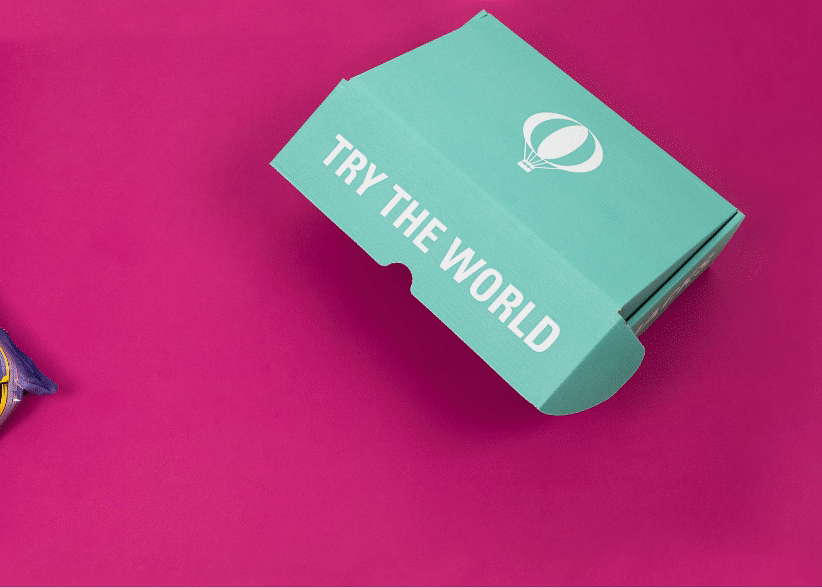Lucie Peltier, the founder of Un Brin Sauvage, is passionate about two things: cooking and plants. This expertise in the kitchen and garden led her to found her own herb and spice blend company in the picturesque region of Mont Saint-Michel on the northern-western coast of France. Here, Peltier talks to Try The World about blending spices in her kitchen, working long hours in restaurants, and her plans to grow herbs in her own backyard.

Lucie Peltier in front of the Mont Saint-Michel © Un Brin Sauvage
The persillade blend from Un Brin Sauvage makes it so easy to create gourmet meals at home without having to purchase a slew of different herbs. How did you get so interested in cooking?
For me, cooking is mostly a childhood dream. There’s an aspect of it that’s very generous: all the cooking you do is for others, it’s to offer something to others, and you offer the best of yourself when you cook. There’s also a very creative side, most notably in gastronomic restaurants, where you can really create a mix of flavors. There’s a side that’s also very aesthetic, and there’s also a very technical side—especially in pastry, but also in cooking. I remember working with sugar, which was very complicated! It was almost like chemistry. So cooking touches on a lot of topics.
With such an incredible passion for cooking, how did you end up with the idea to create Un Brin Sauvage?
In the very beginning, I was going to culinary school in Reines. Soon after, I went to live in Belle de Bretagne, which is located at the food of Mont Saint-Michel, the beautiful bay region where I grew up. I preferred moving away from cooking in a kitchen and instead going towards a job in which I’d have more contact with the outside. Life in a kitchen is a bit closed off, and the hours are peculiar! I really wanted to discover many things, so I had to move away from it.
I started the company three years ago. It was born from my two passions: cooking and plants. I was lucky enough to have worked for a year in Michelin starred restaurants, so I have good training on the culinary side. As for plants, I am now learning more about them. It’s really these two passions that got me interested first in aromatic plants and spices, and later on, in the process of making my own blends.
Your blends are made almost entirely with organic ingredients. Why is using organic produce so important to you?
I grew up eating organic. And for me, organic is important because it comes into a global movement of supporting sustainable development, farmers, and a respect for nature that feeds us. It’s also a part of our environmental commitment.
With this in mind, how do you source the spices for each blend?
All of the aromatic herbs come from outside farmers. I work with many organic producers, primarily from the south of France, and for the spices, I work with different people who go on location, who taste and grow them, mostly in India, Madagascar, and Mexico. My dream is to eventually go look for them myself, which I think will be possible in about three years.
It’s great to hear that you source the ingredients so carefully. Once you have the spices, what is your process for creating a new blend?
To create, first I start with my own associations that I’ve come to know with experience. A few years ago, I traveled a lot, so I’m inspired by a little of everything! It’s a lot of experimenting in my kitchen. I have about 50 little jars in my kitchen, so I eat spiced food everyday.
Once I have the flavors that I like, the idea is to refine them. The blends are usually associated with certain foods to start, and then I try with others, to make sure that it’s versatile. There’s a lot of experimenting with the blends of colors, smells, and flavors. Right now, I’m actually working on an entire line with flowers, which is very aesthetically driven. The idea behind the blends is to bring gastronomic cuisine to people’s everyday kitchen in an accessible manner.
Any other plans for the company?
This year, we launched a garden in the bay of Mont Saint-Michel that grows mostly thyme. We call it the Jardin Pédagogique (educational garden), and we use it to discover aromatic herbs and plants that attract bees. We also plant beehives in order to make thyme honey and rosemary honey. It’s a great collaboration because the bees also pollinate the plants and enable us to develop beautiful, educational gardens. At some point, we might partner with schools, handicap centers, or even with the prison in Reines. For now, everything is very preliminary, but I have many ideas!
Wow! That would be a big step!
Yes, definitely! And it’s a big part of my main goals for Un Brin Sauvage. This year, we’re already putting the local production of the herbs in place. Within the next few years, maybe we can start with one or two countries to meet the producers directly. I’m excited about what’s coming next.
Note: This interview was translated from French.






